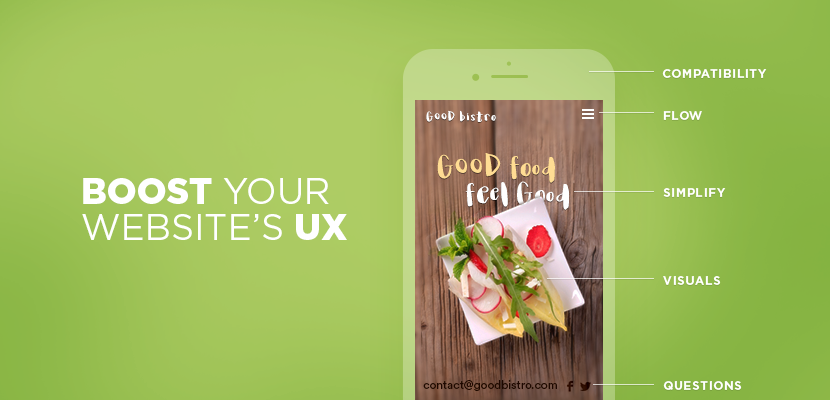Whenever we visit a website, we unknowingly rate it by its usability, its accessibility and its efficiency. The higher these three aspects are, the more likely we will stay and engage with the content. So, when creating our own website, we need to keep these guidelines in mind and aim to create something that people will want to engage with, over and over again—this is called the User Experience (UX).
1. Simplify your content
Did you know that when we stare at the computer while reading, we blink less? A lot less, actually. We blink 66% less when we use the computer. That means in the time that someone blinks once or twice, they will have decided if your website is worth or not worth their time. You should only include the important details on your homepage—treat your homepage as a tl;dr.
2. Design to suit your visitors’ tastes
Do you remember when we talked about rapport under our blog post, “Google Analytics for Complete Beginners?” Great.
After you’ve figured out your audience demographic and audience geo using Google Analytics, you can use this as a reference to build your website. Keep your audience in mind when you create your website. You don’t want to create a website that is geared towards a younger demographic when your audience demographic is older, and vice versa. Your website is always ever-growing, so expect to alter your website to match your trends.
3. Use visuals
Pictures, animations, videos, colors, etc, can help your audience navigate your website. Keep your visuals simple, and only include them when needed. You do not want to overwhelm your visitors with your visuals because they will look past your content. Your visuals should catch your audience’s attention; but your content will make them stay.
Believe it or not, but text plays an important role in your user experience. Your text should be easy to read, and straightforward. You can choose up to three fonts to use—simple is better.
In this digital age, we know a keyboard better than the back of our hand. A keyboard changes our experience on the Internet, allowing us to search near and far for information on the world wide web. Your navigation bar is like a keyboard. Your visitor should be able to easily navigate around your website using this navigation bar—so make it simple.
4. Content flow
Were you ever allowed to write a cheat sheet in school for a class? Every inch of that cheat sheet was filled with information, and you knew where everything was. Now, have you ever compared your cheat sheet with someone else who did the same? You looked at the cheat sheet, and returned it because you had no idea where anything was.
With your website, make sure you separate your elements with white space. You do not want your audience to experience the same thing. Do not want to overwhelm your audience because they will find a website that is more visually appealing, even though yours may have better content. You may know where everything on your website is but your audience will not.
5. Mobile compatibility
Our mobile devices are a part of us. When our phone runs out of batteries, a part of us goes with it… Too dramatic? Perhaps, but it is still true. Our phones go with us everywhere, and we are very likely to search up a website from our mobile devices, especially since we are always on the go. You can use our Website.com mobile editor to fine tune the mobile version of your website.
6. Cater to questions
Should your visitors have any questions or concerns, they might want to contact you for more information. Have your contact information easy to access, with the correct contact information. If you are active on social media, you can include these social media links as a means for your visitors to contact you as well.
An unforgettable user experience starts from the design. You can tell that you have a great user experience when your visitors spend longer amount of times on your website so make it difficult for your visitor to leave.
